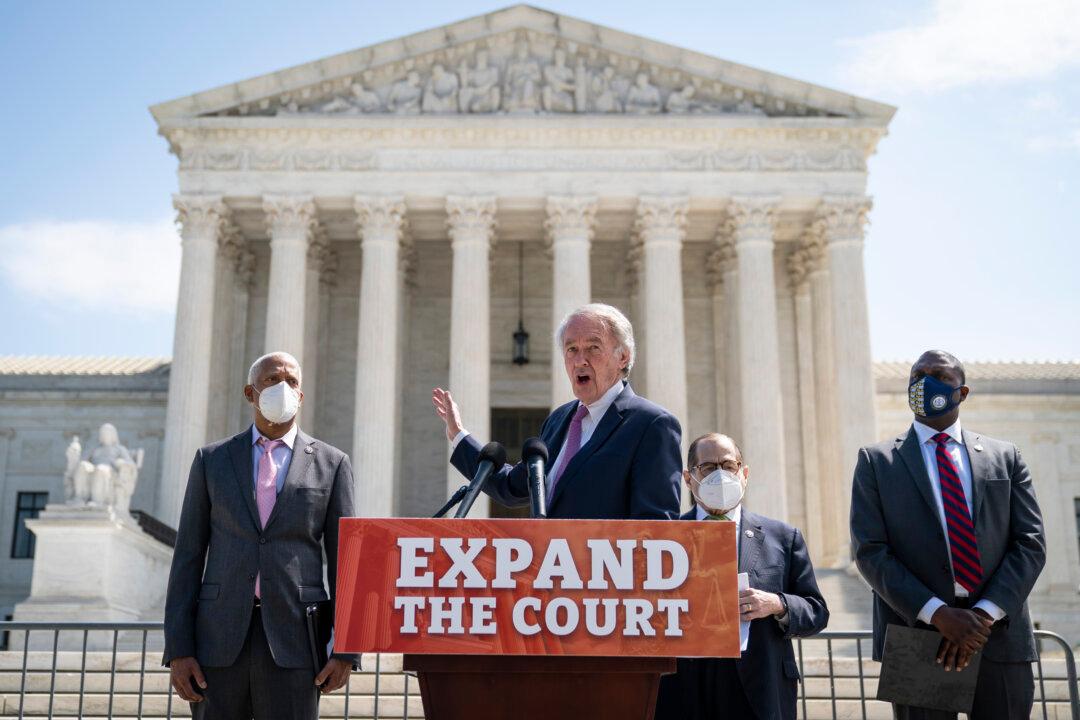Several Democratic lawmakers have announced a bill to expand the Supreme Court by adding four additional justices, which would “fundamentally compromise and undermine two branches of government,” according to an expert.
“This would be the greatest takeover of the judicial branch by the political branches since America was founded,” said Thomas Jipping, federal judiciary expert at the conservative Heritage Foundation think tank and former counsel to former Sen. Orrin Hatch (R-Utah).





